Adventures in Lazy Dyeing
As you know Bob, I work at the Fenimore Farm, which is a living history museum in Cooperstown, N.Y. Mostly,1 I do stuff that’ll get you to a fabric, like spinning and weaving.
Because I’ve been making so much yarn this season,2 I’ve been reading about natural dyes. While yarn is great, colorful yarn is even better.
However. I don’t want the dyeing to require much effort on my part. We do a whole natural dyeing weekend every three years and it’s A LOT of work. Caldrons are involved, as is constantly tending fires. As is schlepping water buckets and measuring beetles and muttering numbers.
I’ve been lead to believe there are some easier ways. I stumbled across a version of this indigo dye that uses yeast, ammonia, and indigo, which are three things I can easily get my hands on.
Yeast I pulled out of my freezer at home. Ammonia was trickier because our grocery stores were out of it3 but Walmart wasn’t. I spelunked into one of the museum’s basements for the indigo.
Thus armed, I mixed up the dye as directed.
According to the instructions, you know the dye is ready when the solution is yellow-green.
After a month, mine looked like this:
Those of you who aren’t color blind will note that this is NOT a yellow green. It is blue-gray, maybe with some green if you squint super hard.
We4 were pretty sure this batch was a failure and have a guess as to why.5 Still, we decided to see what happened if we tried to dye with it.
I tossed in some fabric no one cared about:
Let it sit for a bit. Pulled it out to dry.6
While these looked blue immediately after being removed from the jar, I guessed it was only a surface color and would wash right out.
I was, sadly, correct.
Still, I press on. I currently have another pot of lazy dye going, this time with copper pipe. Will update as warranted.
And, no. This isn’t now a natural dyeing blog/newsletter where I wax rhapsodic about madder and alum.7 But I did want to capture this information somewhere and here seems as good as anywhere else.
Use it as you will.
I will get back to Isabella Bird, mind. Just need to get through the museum season first. Know that she’s still out there, exploring.
If absolutely pressed, I can hold down the fort in the Lippitt Farmstead (which isn’t a fort but you get my meaning). Ordinarily, the person in the building is responsible for cooking a mid-day meal over the open hearth. I mostly make toast, if there’s bread around, because cooking over a fire isn’t something I’m inclined to really learn. Feels too much like camping, imo, and I don’t especially want to do that either.
My husband offered to collect his urine, which is the old-school way to get ammonia, but I left that as a last resort.
Me and Garry, my mentor. Garry has been doing this for 30+ years and has forgotten more than I’ll ever know, even though it doesn’t seem like he’s forgotten much.
Guess: the ammonia killed the yeast, given the order it was mixed in?
The smell reminded me of an frat house basement floor and was no Proust’s madeleine, let me tell you.
I mean …. I could.


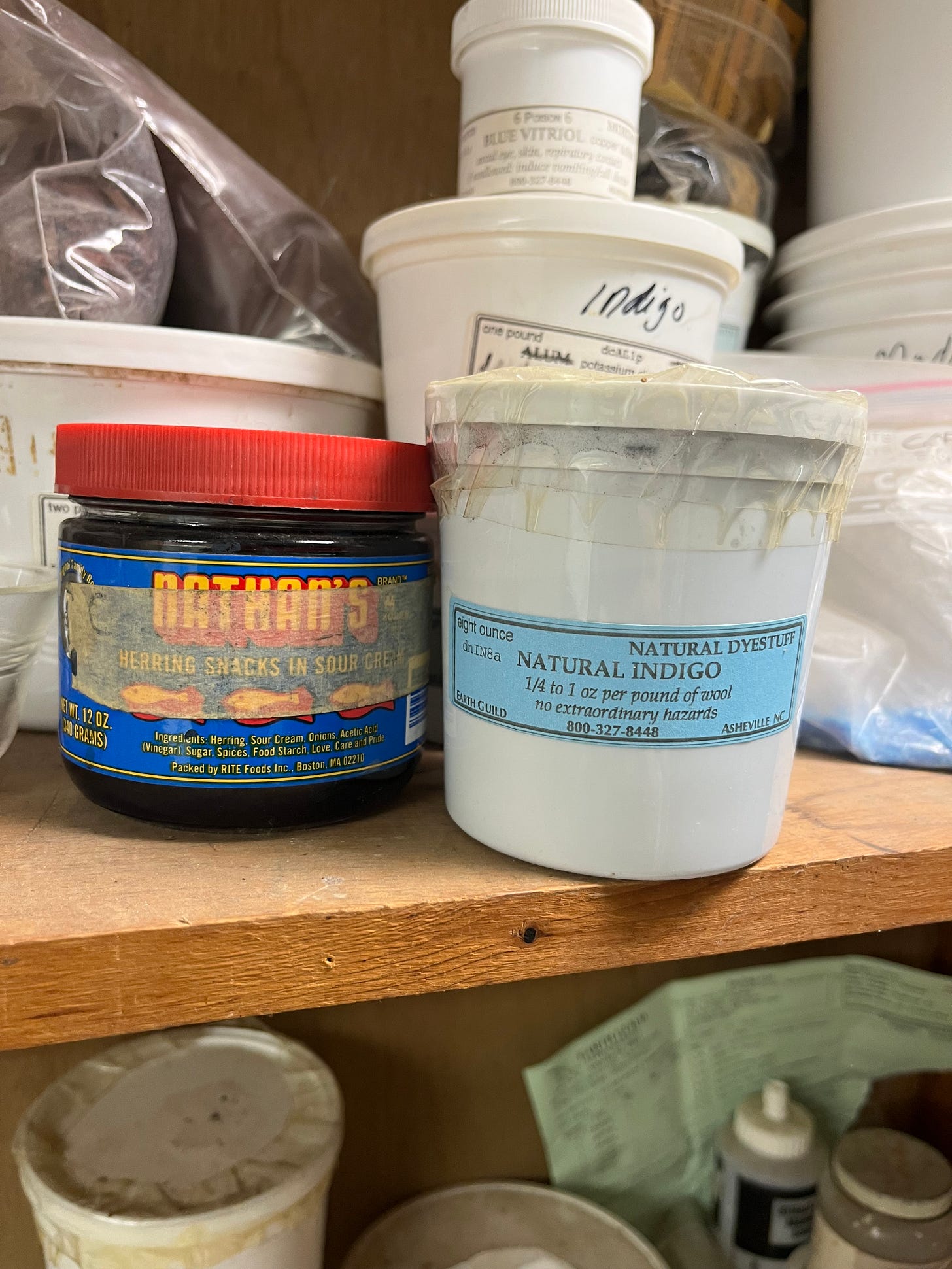
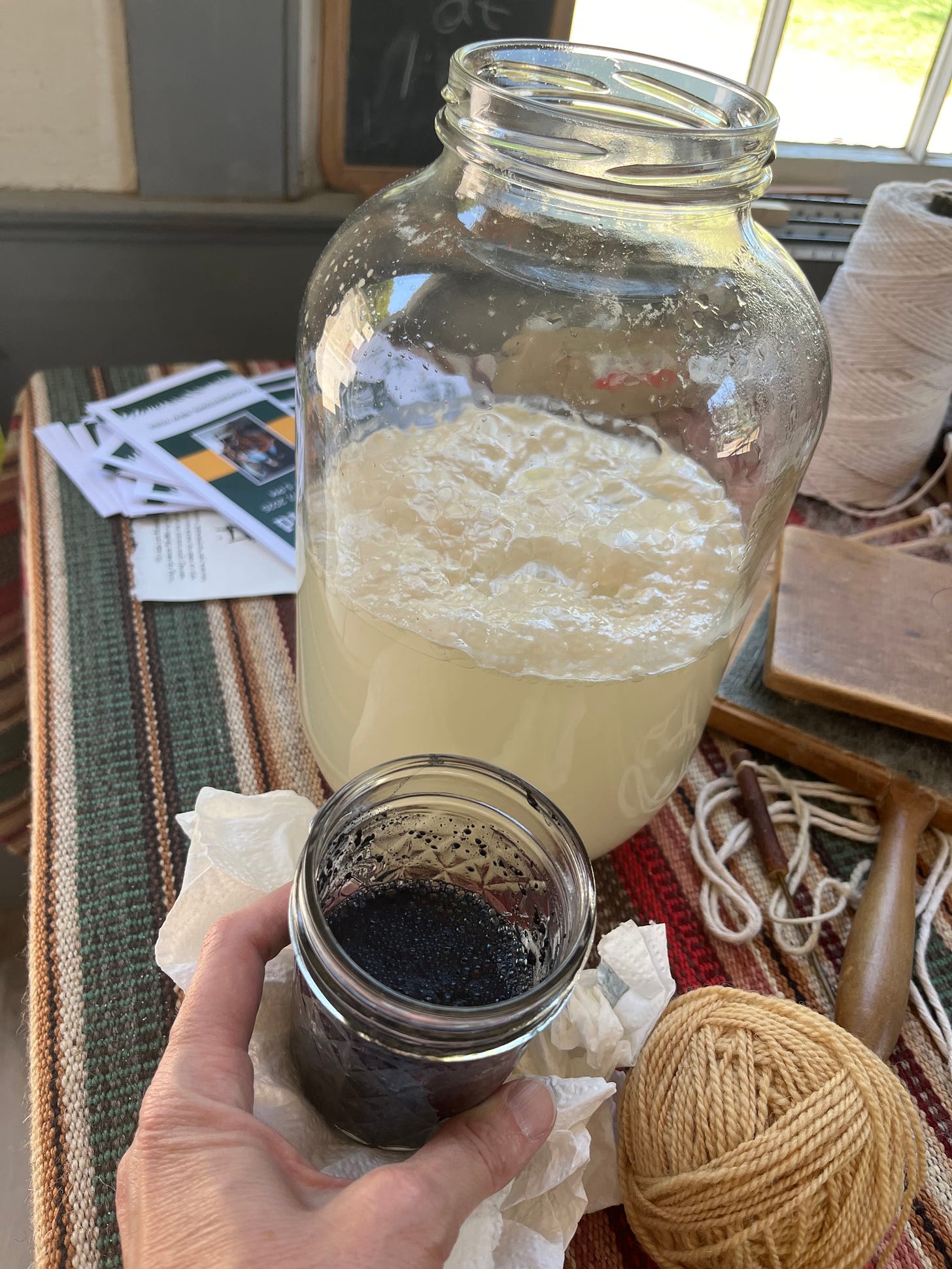
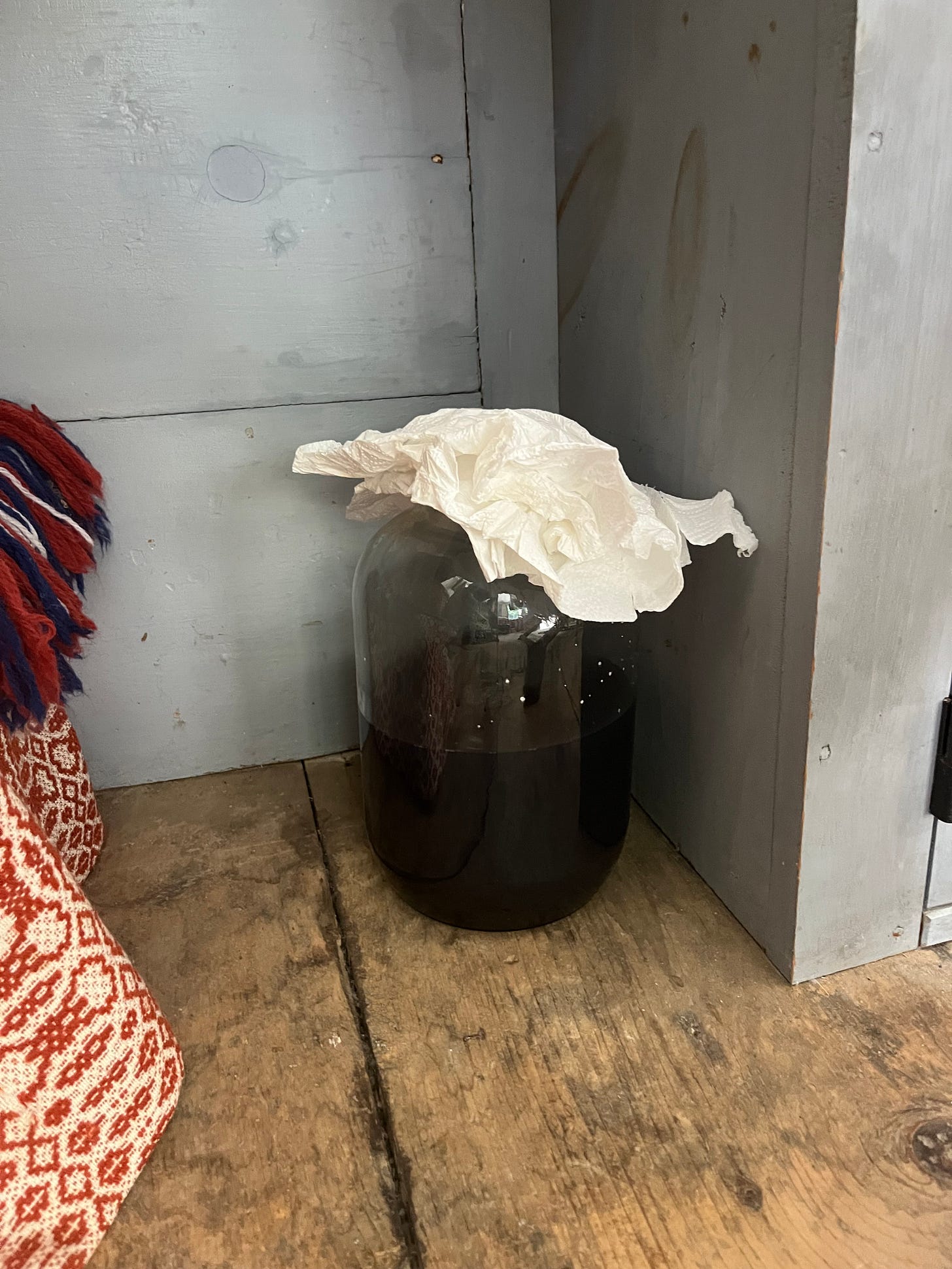
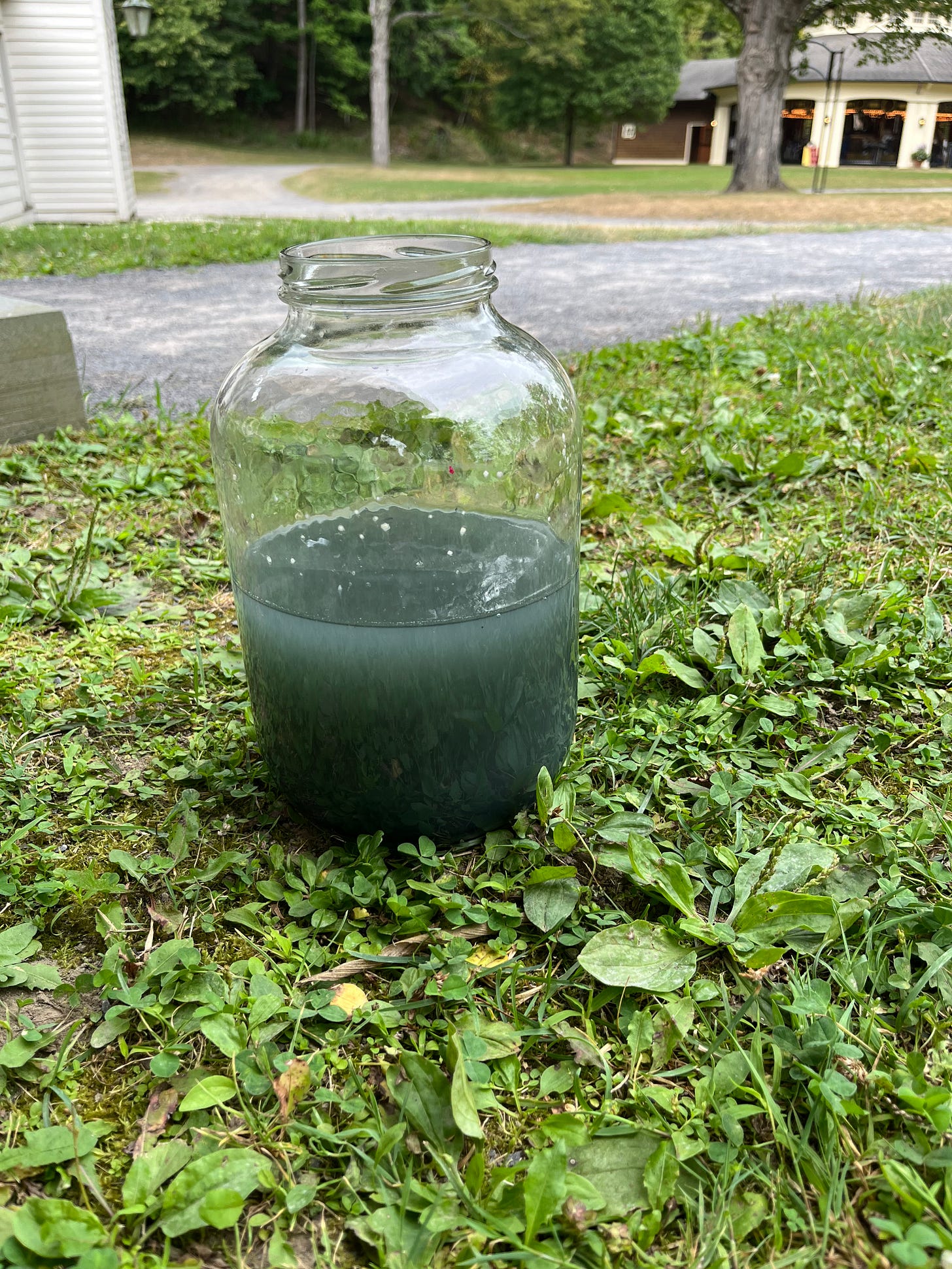

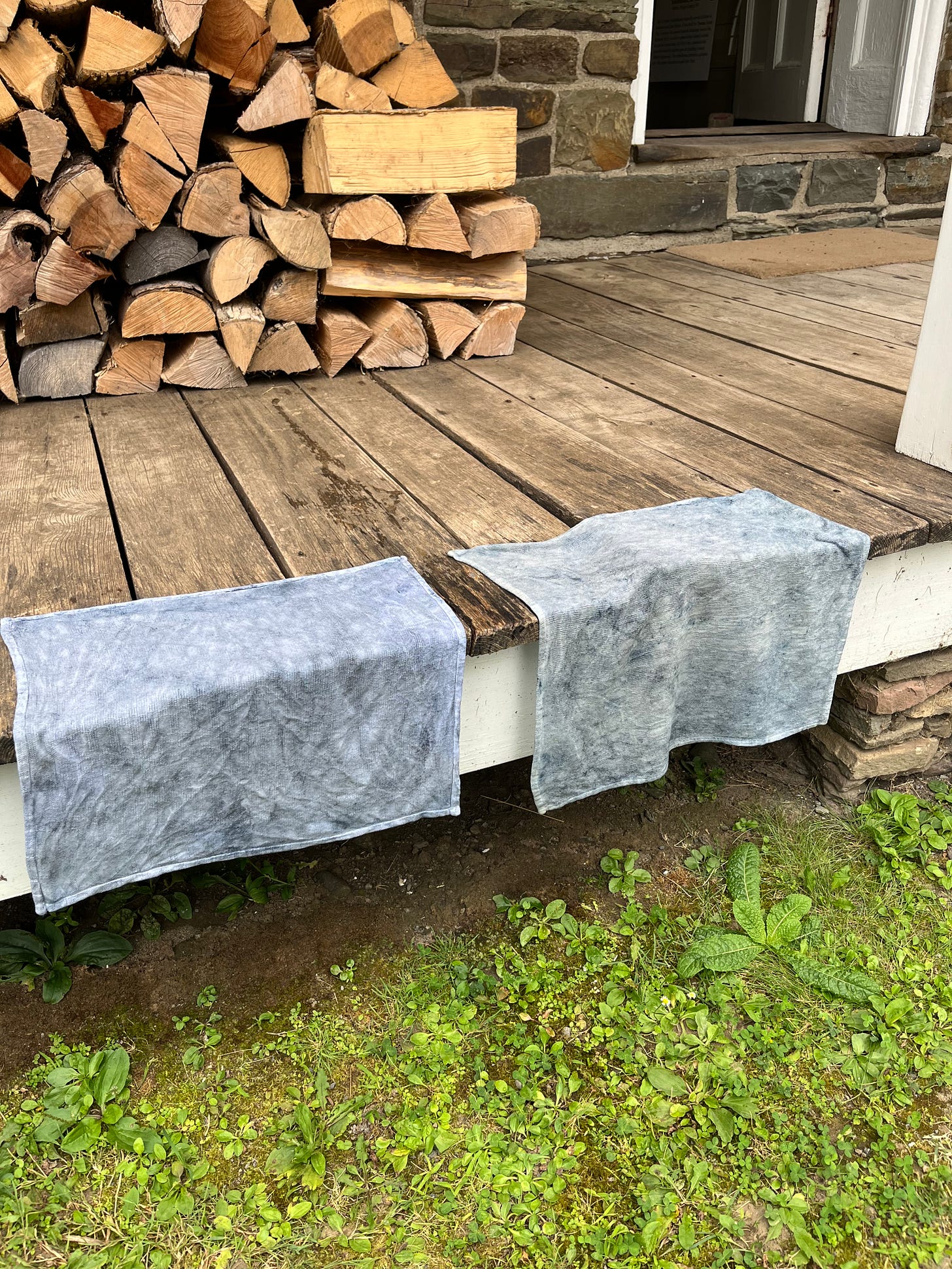
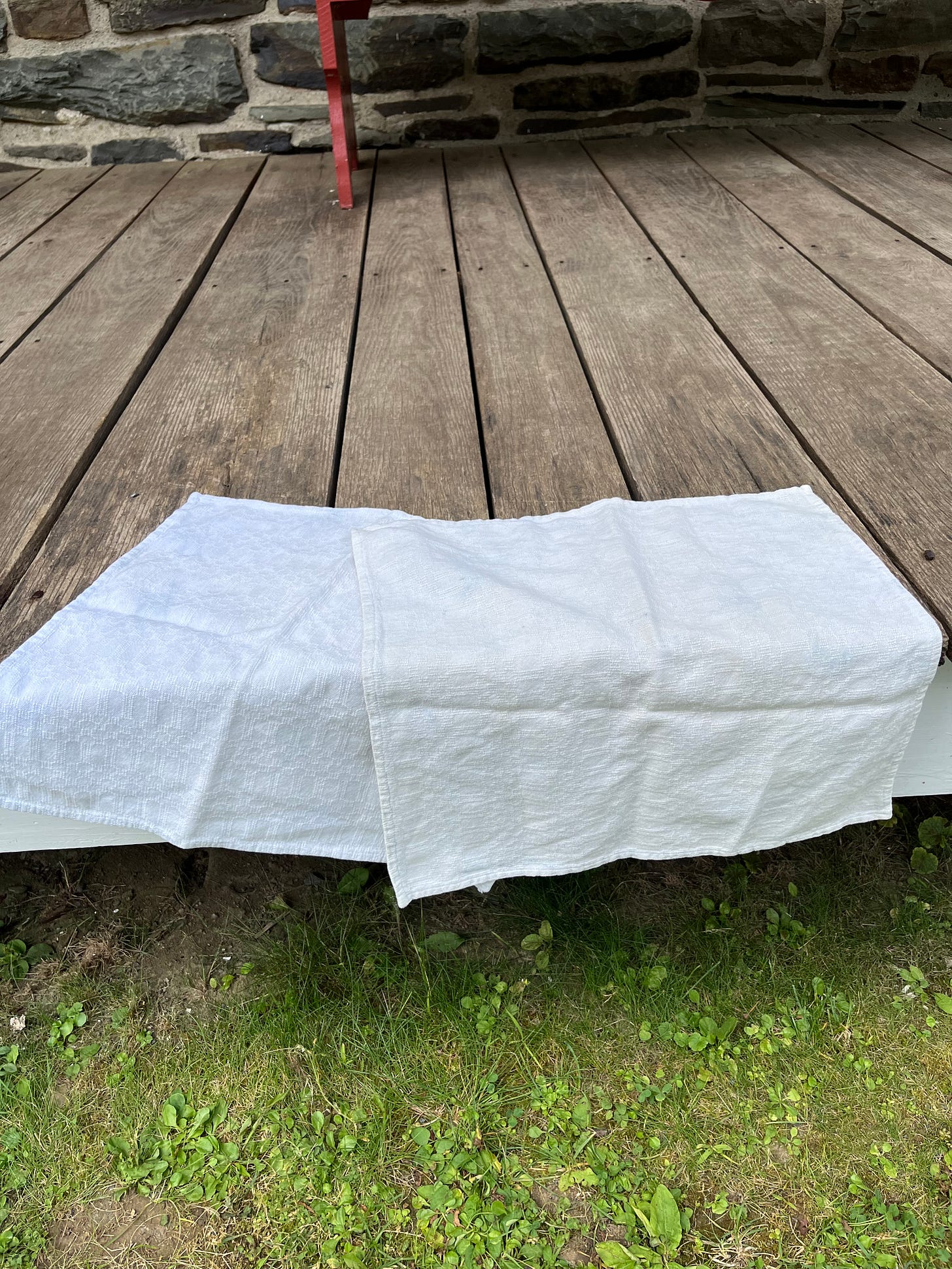
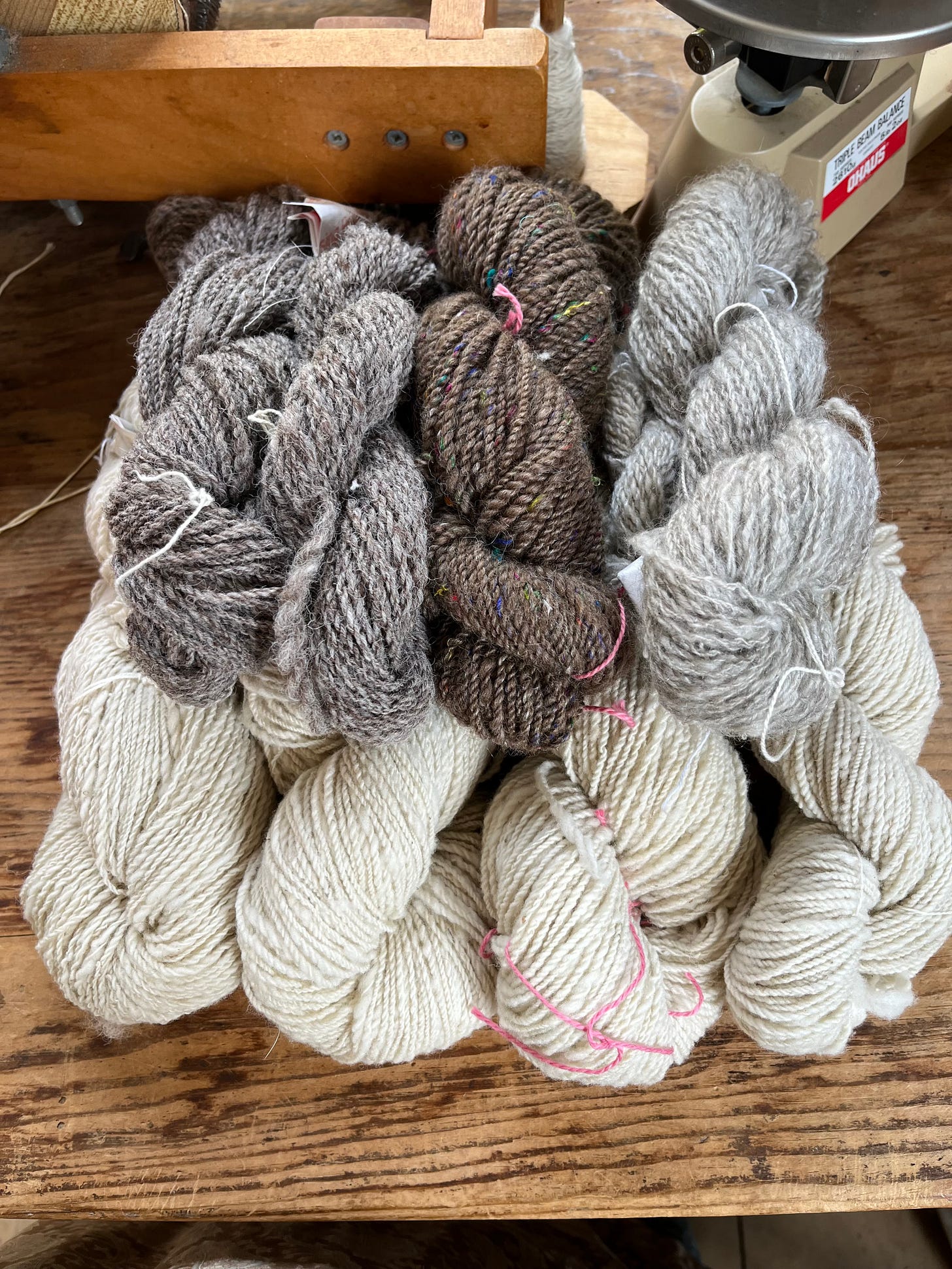
Ah, dyeing. Used to do this decades ago before I got into the other kind of dying (the kind I worried about as a coroner). My favorite color was the purple achieved after marinating a certain type of lichen (Umbilicaria mammulata, I think. Requires foraging rocks at a certain altitude) in, yes, urine. For about a month, as I recall. Good times.
Very cool adventures!